Walking with Wolves trail: Fans can wander through club's history
From the homes of the club’s founders to the site of the first pitch - Wolves fans can now take a wander back through history.
A new heritage trail called Walking With Wolves has been created by Wolves Museum curator Pat Quirke and Tony Gask.
Eleven landmarks with links to the club’s past are dotted along the two and a half mile route, which starts in Eagle Street, Penn Fields and finishes at Mason Street, Blakenhall.
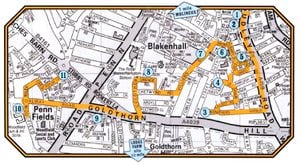
Leaflets for the walk, containing graphics and a map, have been designed by Mr Gask, who is the great-grandson of John ‘Jack’ Baynton the team’s first captain, and the project has the full backing of the club.
Wolverhampton Wanderers began life as a schoolboy team – St Luke’s FC.
A meeting to find interested players was organised by two pupil-teachers at St Luke’s School, John ‘Jack’ Brodie and Baynton, and took place on November 10, 1876.

An advertisement had asked for ‘any gentlemen interested in the game’ to attend a meeting of ‘Goldthorn Football Club’, although the name was soon changed to St Luke’s.
Each player paid a shilling to join the club and Baynton got permission from his mother to use his mother’s Lodge Farm, by Goldthorne Hill, for a pitch
They were supported by headmaster Harry Barcroft, who encouraged football.
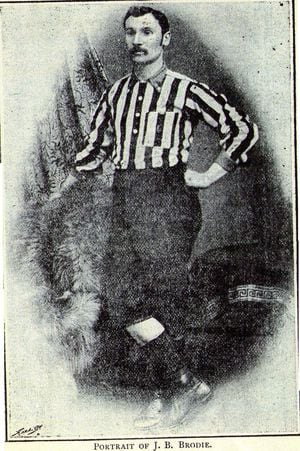
The first team was made up of church choir members and they went on to play their first match against the well established Stafford Road’s second team on January 13, 1877.
They were later one of the 12 founder members of the football league, which started in September 1878.
Two years after the first game, St Luke’s merged with local cricket and football club The Wanderers, to form Wolverhampton Wanderers.
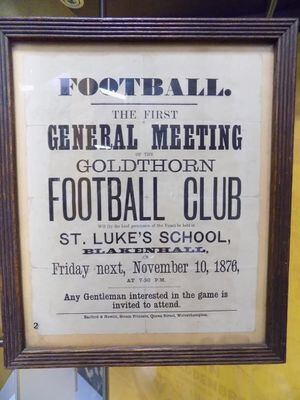
The heritage trail starts at Baynton’s last home in Wolverhampton, which can be found in Eagle Street.
As well as being one of the co-founder’s of the club, he was the original captain.
He played in eight different positions for the team and was in goal for the 1889 FA Cup final.
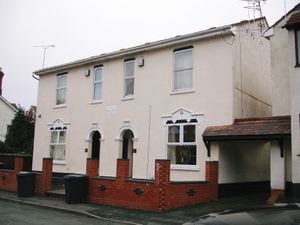
Further along in the trail is the terraced houses in Haggar Street where several of the first team, including Brodie and Baynton, lived.
While another site is Woodfield Avenue Junior School, where Brodie was headmaster when it opened in 1913.
Brodie was a leading goal scorer for the club, later becoming a referee and a club director between 1913 and 1922.
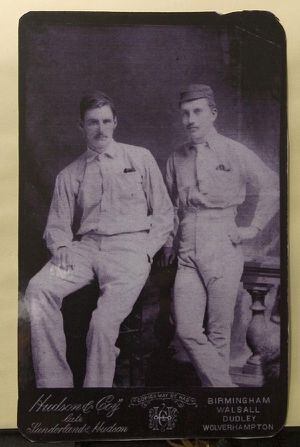
The pub, which housed the players’ original changing and meeting rooms, is also highlighted on the route.
The King’s Arms, now a shop, was run by Jeremiah Johnson in the 1870s and 1880s and his son Charlie was the first Wolves player to receive a call-up to the England team.
Old Mill Field, off Twelve Yard Road, which is now Grange Road, was the site of the first pitch used by the St Luke’s team while John Harper’s Field, just past St Luke’s Church, was the second pitch. New additions are also included with roads named after Brodie, Baynton and Barcroft on a housing estate off Dudley Road.
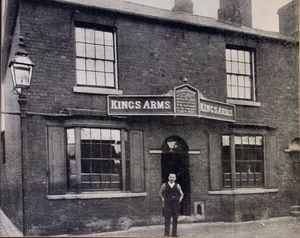
“It is a great history that Wolves have got. They’ve gone out of business and been saved on more than one occasion.
“There is only one club in Wolverhampton, it’s not like some cities like Nottingham, Bristol and Birmingham where they are two. This is our club.
“The club is an important part of the city and the city is an important part of the club,” says Mr Quirke, who runs guided tours of the Wolves Museum and the stadium.
The 68-year-old, who has a season ticket in the North Bank, said the idea for a trail goes back to when he wrote his book The Origins of Wolverhampton Wanderers, which was published in 2013.
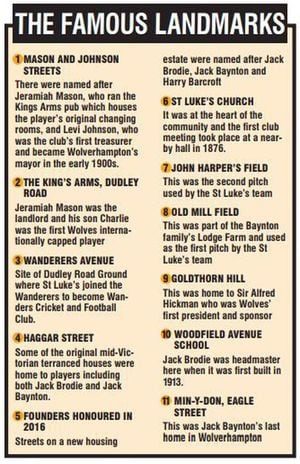
“When I was researching for a book I was writing on former manager Major Frank Buckley, I discovered the standard histories on Wolves had a lot of mistakes in them.
I hadn’t seen anything on the history of the club that was completely accurate. I decided to concentrate on John Brodie, John Baynton and John Addenbrooke, who was Wolves’ first manager.
“Through that I met Tony Gask, who is the great-grandson of John Baynton. I had researched all of the places that were connected to the origins of Wolves when I wrote the book.
All of the sites can be found in quite a compact area so I came up with the idea of a walking trail. I was talking to Tony about it and he asked if he could do the artwork. I think he’s done a really good job,” explained Mr Quirke, who lives in Bilbrook.
The trail was being launched ahead of Wolves’ game against Aston Villa with a guided tour led by Mr Quirke.
“It seemed fitting that it was the day of the Villa match because Wolves’ first league game was against Villa and they also played them the day Molineux opened,” he said.
Mr Quirke is in talks with Walking for Health in Wolverhampton to find out if volunteers can be trained to lead more guided walks in the future.
At the moment, the walk can be done self-guided and at a steady pace, should take just over an hour.





